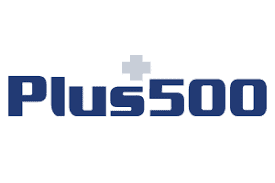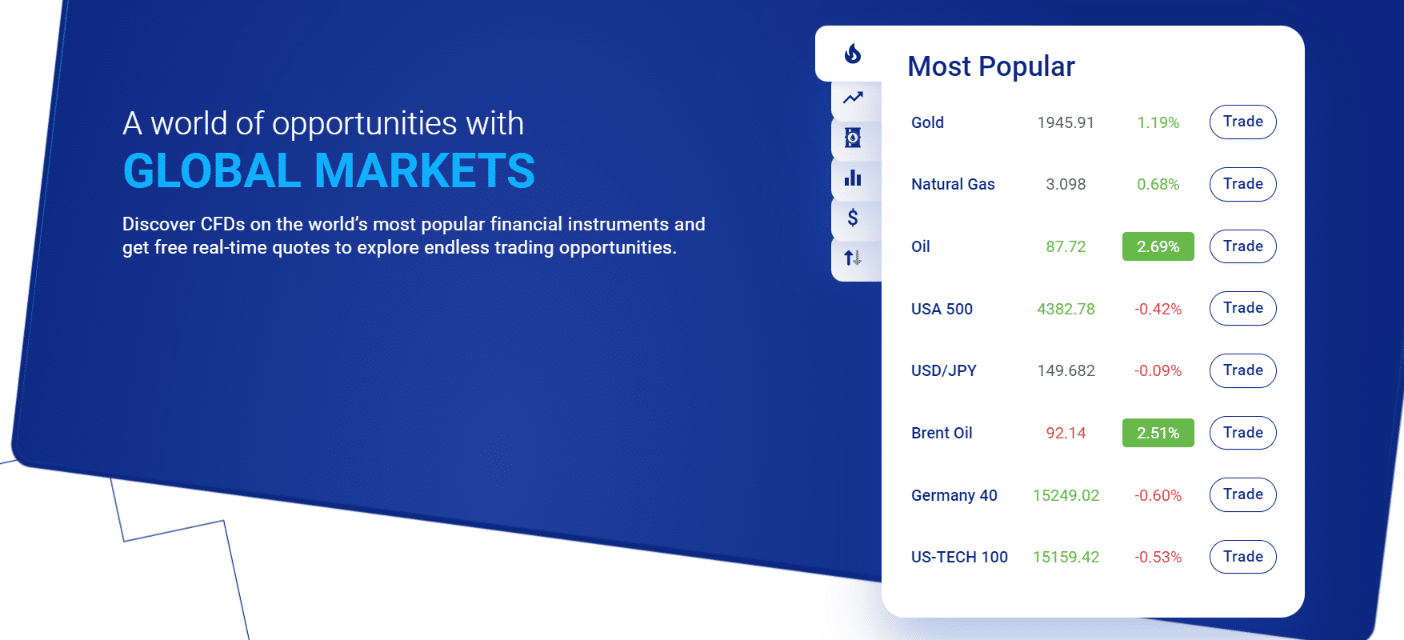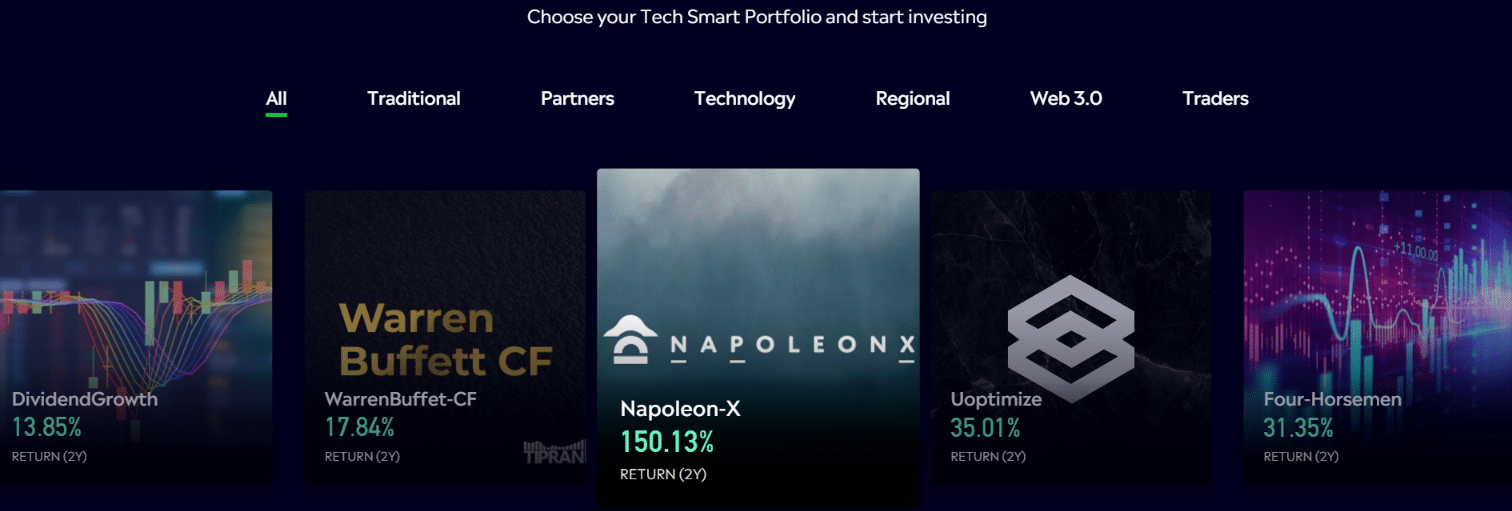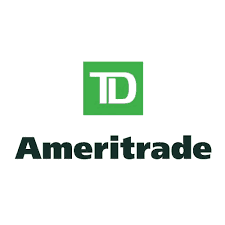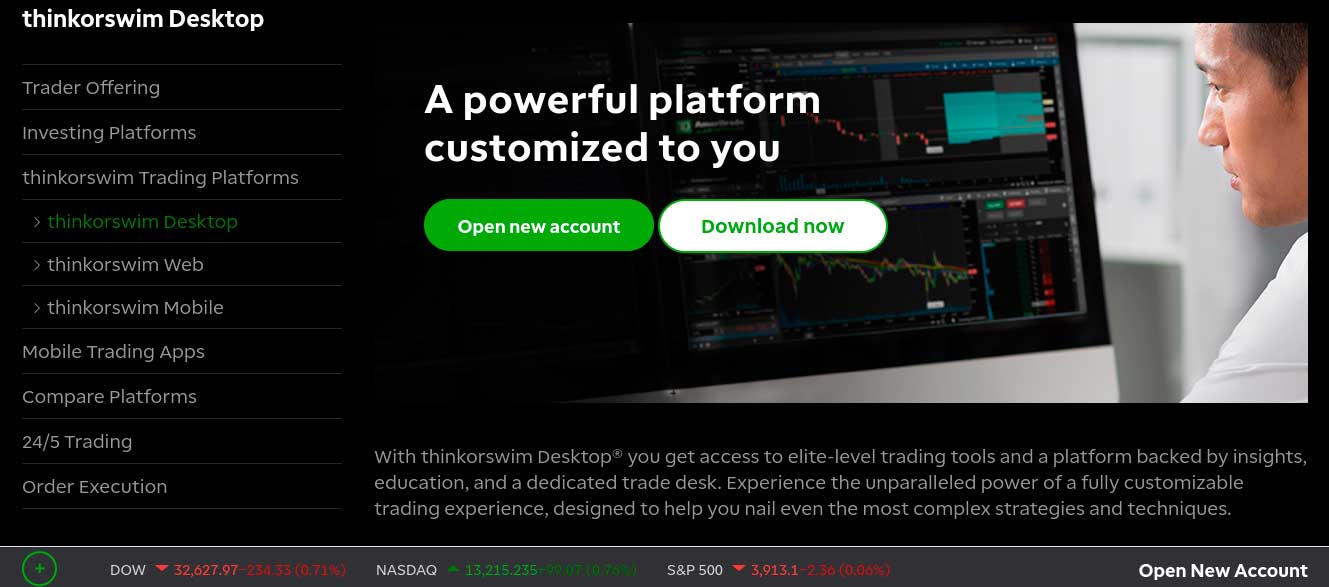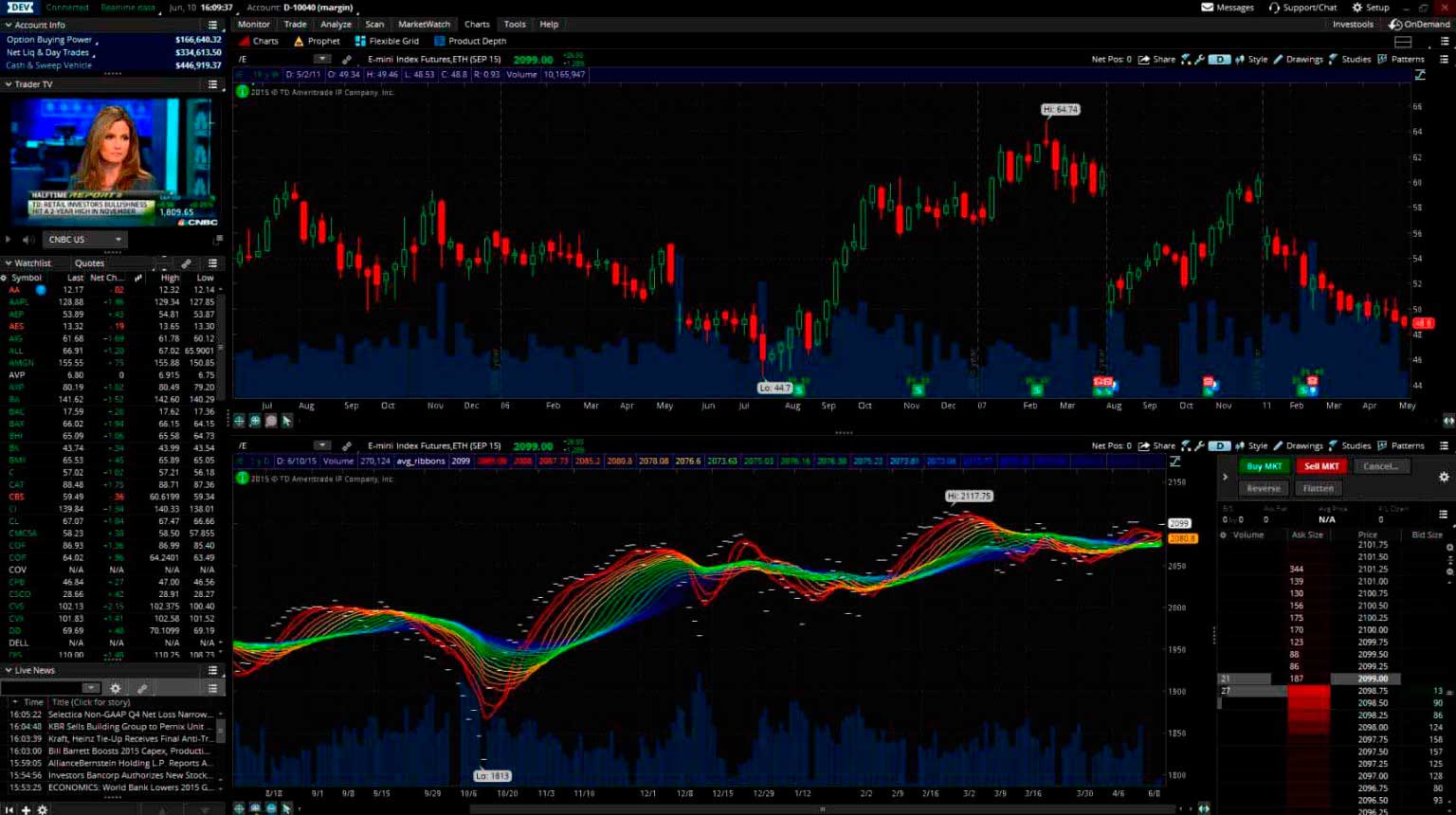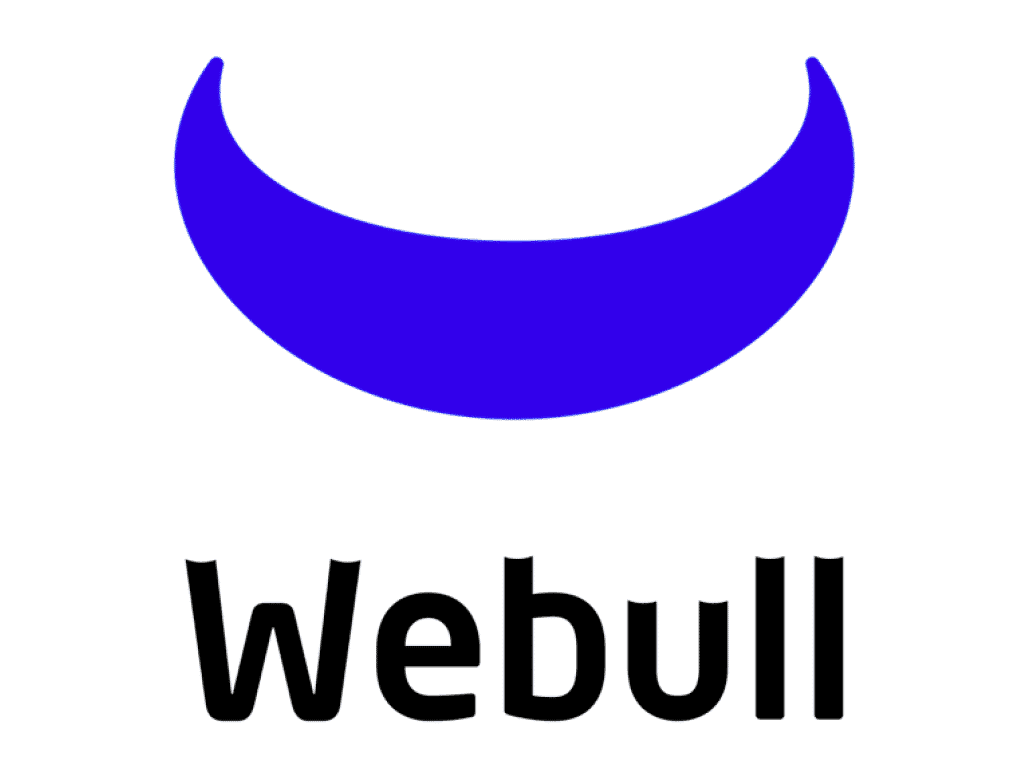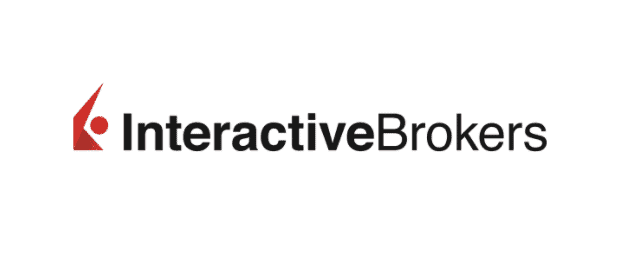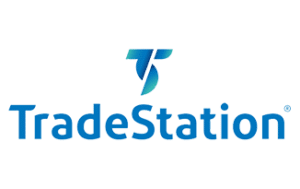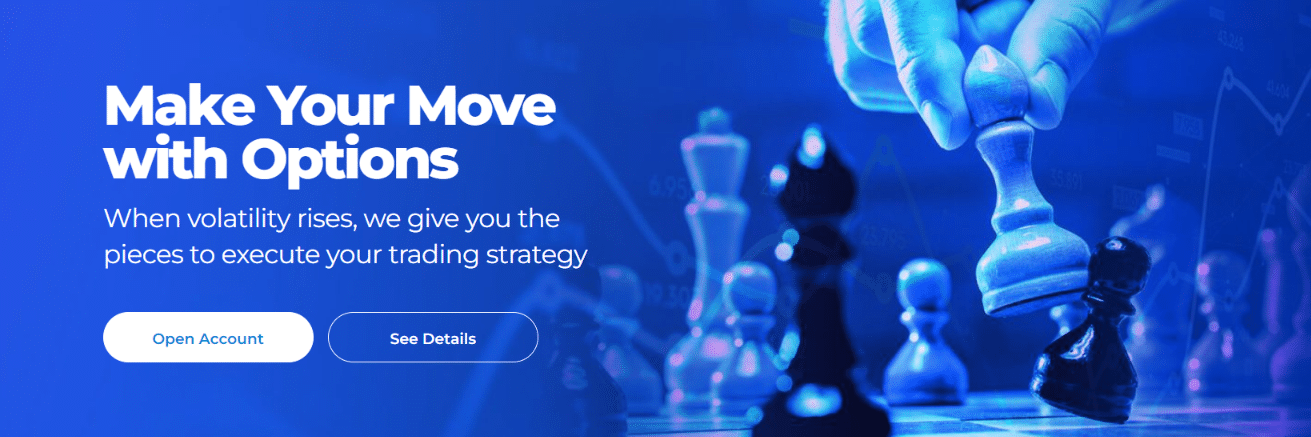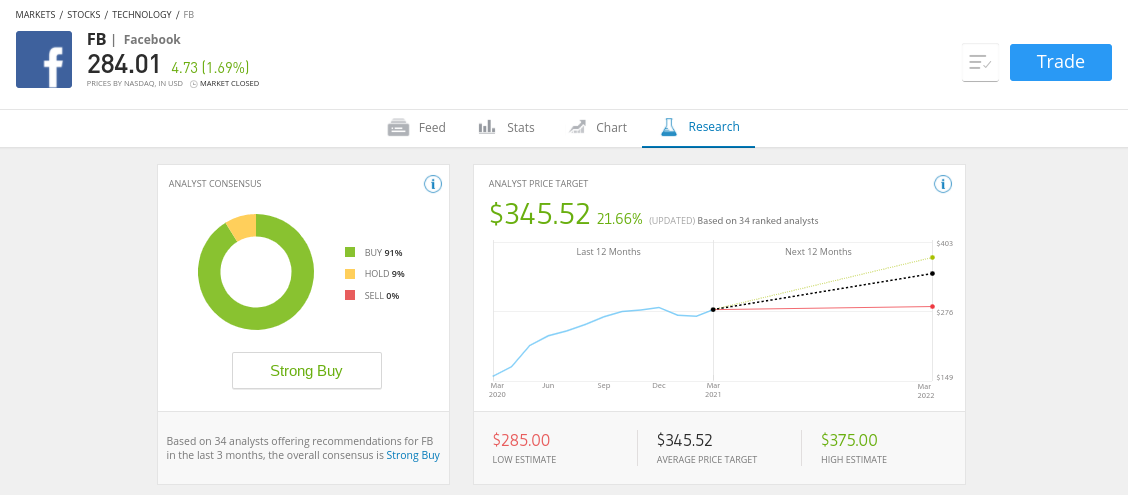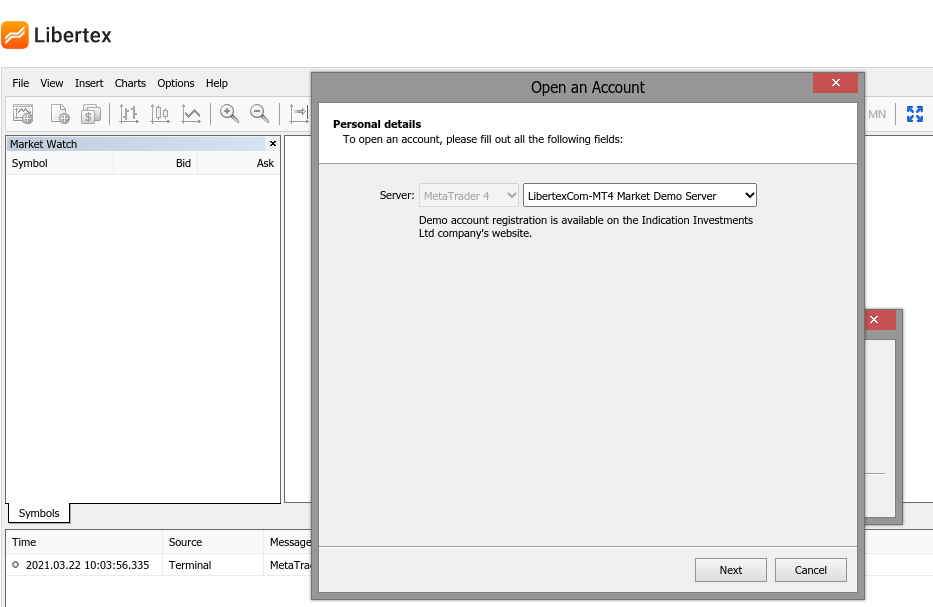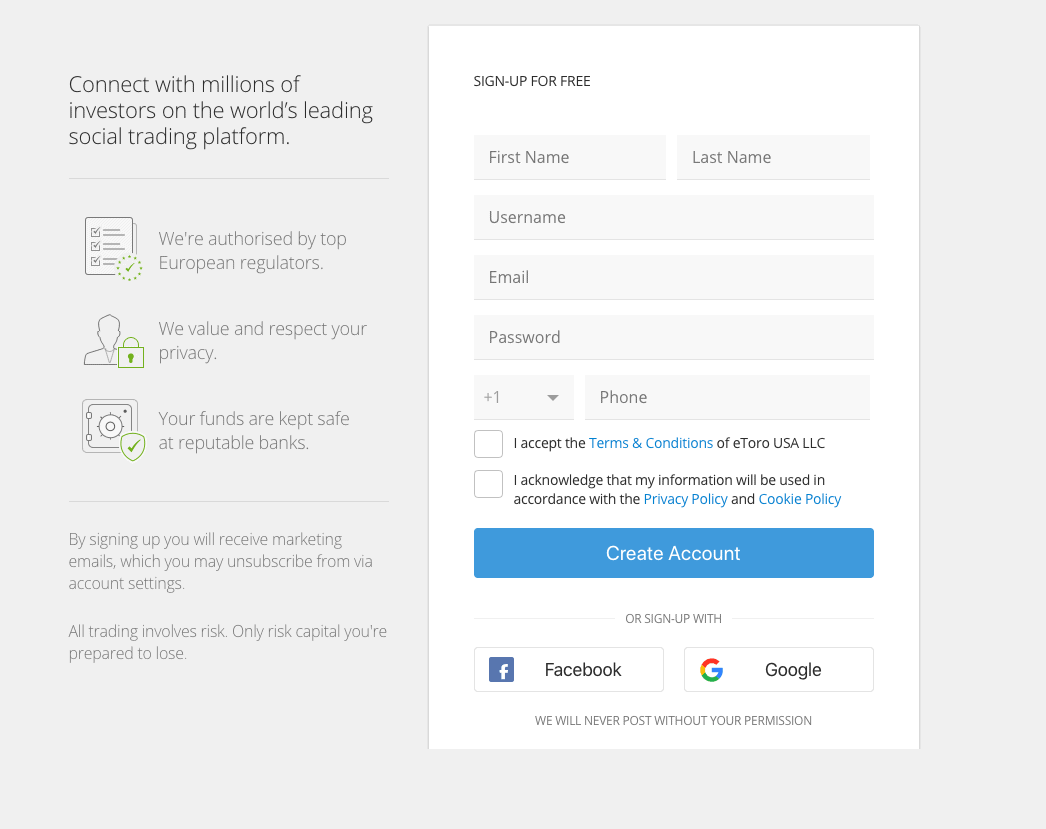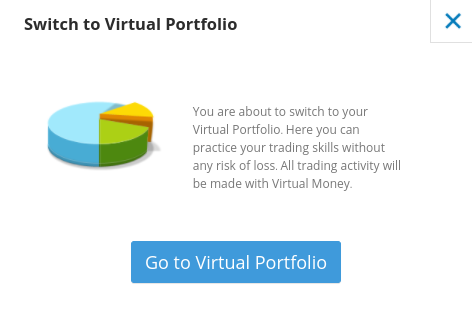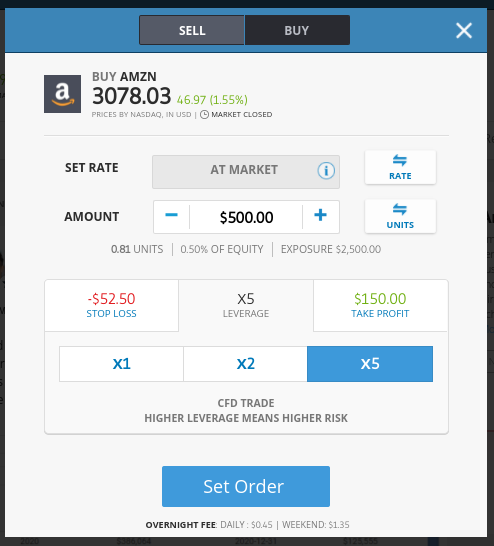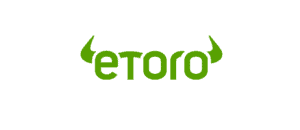Best Paper Trading Platforms & Apps of July 2025
Paper trading is offered by online brokers and allows you to buy and sell financial instruments in a risk-free manner. This enables you to practice your trading endeavors without risking any funds and get used to how the trading platform works.
Paper trading platforms are also valuable when it comes to testing new trading strategies and systems.
In this guide, we review the best paper trading platforms to consider in 2025.
Best Paper Trading Platforms of 2025
We found that the following online brokers offer the best paper trading platforms. You can read what each simulator account offers by scrolling down.
- Plus500 – Best paper trading account for leveraged CFDs. Plus500 is regulated in the UK, South Africa, New Zealand, and other European countries. US traders can use Plus500 for futures trading only. The broker offers CFD trading in currencies, equities, commodities, and indices.
- eToro – Overall best paper trading platform 2025. eToro comes with social trading, smart portfolios, +3,000 assets, and features for both new and seasoned traders. For crypto traders, eToro offers direct cryptocurrency trading. The broker is regulated by the FCA, CySEC, and the U.S. Securities Exchange (SEC), which makes it fully accessible to U.S. traders.
- Libertex – Best Paper Trading Site with the MetaTrader 4 (MT4) and MT5. Libertex is regulated by the Cyprus Securities and Exchange Commission. Besides forex and CFDs, Libertex portfolio account is designed for stock traders and investors, dividends may be paid frequently.
- TD Ameritrade – Best paper trading platform for testing advanced strategies. TD Ameritrade was acquired by Charles Schwab. The new platform, dubbed ‘Schwab Trading Powered by Ameritrade’ will offer an array of products. It is a combination of Thinkorswim and Schwab trading platforms that will include chat rooms and customized algorithms via Thinkscript language.
- Webull – Best paper trading app for U.S investors. Webull is only available to U.S traders, regulated by the SEC and Financial Industry Regulatory Authority (FINRA). A range of assets are available including stocks, ETFs and AI can manage your portfolio. Webull also offers Over the Counter (OTC) products such as penny stocks and shell companies.
- Interactive Brokers – Best paper trading simulator for long-term investors. Interactive Brokers (IBKR) is heavily regulated and welcomes all traders from the United States. Founded in 1978, IBKR offers financial products from multiple sectors such as mutual funds, futures, metals, and fixed income.
- TradeStation – Best trading simulator for futures and options. TradeStation is regulated in the United States (SEC and FINRA) as well as in the UK. Access to futures, futures options, stocks, ETFs and cryptocurrencies (BTC and ETH) makes TradeStation a perfect solution for futures and options traders.
eToro is a multi-asset investment platform. The value of your investments may go up or down. Your capital is at risk.
Top Paper Trading Platforms Sites Ranked & Reviewed
When searching for a paper trading platform that caters your needs – thereto are many things that you need to consider. For example, does the platform mirror live market conditions such as spreads and leverage and how much will you be given in paper money?
If at some point you are also planning to trade with real money – you also need to explore what the broker itself offers.
Taking all of this into account, below we discuss the top paper trading platforms in the market.
1. Plus500 – Best Paper Trading Account for Leveraged CFDs
Plus500 is a popular online CFD trading platform that provides access to over 2800 instruments including shares, ETFs, indices, options, forex and cryptocurrencies. Users can also trade commodities like hard metals, energy, and agricultural products. All of these CFD marketplaces at Plus500 can be traded commission-free and with competitive spreads.
For US traders, the platform can be used to access futures and options trading, which are both popular amonmgst active traders. Plus500 also offers leverage of up to 300:1 for professional accounts and 30:1 for retail traders only on the CFD platform, which is suitable for advanced trading strategies.
To practie day trading on Plus500, the platform provides users with a free demo account that is funded with $50,000. The demo trader can be used to explore that platform’s features and trade4 different markets.
You can sign up for the paper trading platform by selection the ‘Demo Account’ option. In doing so, you can start trading risk-free without needing to make a deposit. On both the real and demo accounts, Plus500 allows you to seamlessly switch between its desktop platform and mobile app.
The latter is available on both iOS and Android devices and comes with all of the same account features as found online. If you decide to upgrade to a real money account, Plus500 requires a minimum deposit of just £/$100. Supported payment methods include debit/credit cards, bank wires, and Paypal.
Pros:
- A commission-free trading policy
- Over 2800 of CFD trading markets
- Tight spreads from 0.8 pips
- In-house trading platform, available on web browsers and mobile phones
- Plenty of features including a risk management tools, price alerts, and a trader’s sentiment tool
Cons:
- No social trading tools
- CFDs only for non-US traders
- US traders can only trade futures
80% of retail investor accounts lose money when trading CFDs with this provider. You should consider whether you can afford to take the high risk of losing your money.
2. eToro – Overall Best Broker for Paper Trading 2025
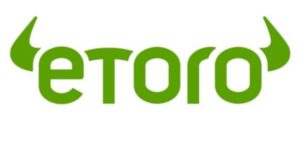
There is no requirement to deposit deposit paper trading. eToro comes pre-loaded with a demo balance of $100k.
Most importantly, the eToro demo facility mirrors live market conditions. In terms of what you can trade, eToro supports more than 2,400 stocks and 250 ETFs, so it’s a great option for a stock demo account.
This consists of more than 17 international marketplaces – including the US, UK, Hong Kong, and much of Europe.
This makes eToro also one of the best choices for those who are interested in trading. Beginners may find eToro to be the best solution for them. A simple interface with many features that assist in understanding your exposure to the market.
You can also trade cryptocurrencies, precious metals, commodities, forex, and indices. Every financial instrument available at eToro can be traded commission-free. There are no ongoing platform fees and non-USD deposits cost just 0.5%.
Once you are ready to start trading with real capital, eToro supports debit/credit cards, bank transfers, and e-wallets like PayPal.
Smart portfolios from different investment segments are offered to all traders with the expected Return on Investment (ROI):
You can trade directly from within your web browser – so there is no requirement to download any software. eToro is also available on a dedicated iOS and Android mobile app. The platform is heavily regulated – which includes licenses with the FCA (UK), CySEC (Cyprus), and ASIC (Australia). eToro is also registered with FINRA (USD).
Pros:
- Super user-friendly trading platform with +20 million clients
- Buy stocks without paying any commission or share dealing charges
- 2,400+ stocks and 250+ ETFs listed on 17 international markets
- Trade cryptocurrencies, commodities, stocks and forex
- Deposit funds with a debit/credit card, e-wallet, or bank account
- Ability to copy the trades of other traders and investors
- Regulated by the FCA, CySEC, ASIC and registered with FINRA
Cons:
- Not suitable for advanced traders that prefer technical analysis
eToro is a multi-asset investment platform. The value of your investments may go up or down. Your capital is at risk.
Note: Only cryptocurrencies eToro customers in the United States will be able to trade on the platform will be Bitcoin, Bitcoin Cash, and Ethereum.
3. Libertex – Best Paper Trading Site with MT4 and MT5
MetaTrader 4 (MT4) is one of the most popular third-party trading platforms in the online arena – with support offered by over 1,000 brokers. For us, Libertex is arguably the best paper trading platform that is compatible with MT4 as well as MT5 – not least because it offers tight spreads on all markets.
Both the MT4 and MT5 are for experienced traders. MetaTrader offers different types of orders such as a trailing stop, a stop loss that aand utomatically shifts in accordance to the profitability of the trade.
Another well-known feature of MetaTrader is the ability to automate your trades via Expert Advisors or EAs for short. The EA, sometimes referred to as a trading robot, can be customized to fit your needs. It can also indicate when a buy or a sell signal is present based on multiple technical trading strategies.
This is ideal for day trading strategies that seek to target smaller margins. Plus, on many markets, Libertex doesn’t charge any trading commissions.
Once you have opened an account with Libertex – you can then sign into MT4 with your login credentials. In doing so, you will instantly have access to €50,000 in paper trading funds.
This will allow you to test out the ins and outs of what the MT4 has to offer – in terms of its advanced order types, technical indicators, and charting systems.
If you have never heard of the MT4 or are new to trading, don’t worry! Libertex can assist you to ensure you fully understand how to trade using their platforms. In addition to the MT4,
Libertex also offers its own trading software you then decide to use Libertex with real money – the minimum deposit is €/$100. You can add funds with an e-wallet, debit card, credit card, or bank wire.
The platform supports a vast range of CFD trading instruments – covering stocks, commodities, digital currencies, indices, ETFs, and more.
We should also note that Libertex is a good option if you are planning to trade with leverage. The broker offers up to 1:600 to professional clients, and less if you are a retail investor.
In terms of reputation, Liberext is regulated by CySEC and was first launched over two decades ago. As such, you will be using a highly trusted broker with a long-standing track record in this space.
Pros:
- Tight spreads
- Very competitive commissions
- Good educational resources
- Long established broker
- Trade stocks and indices like the Dow and Nasdaq100
- Compatible with MT4
- Great choice of markets
Cons:
- Only offers CFDs
CFDs are complex instruments and come with a high risk of losing money rapidly due to leverage. 85% of retail investor accounts lose money when trading CFDs with this provider. You should consider whether you understand how CFDs work and whether you can afford to take the high risk of losing your money.
4. TD Ameritrade – Best Paper Trading Platform for Testing Advanced Strategies
Launched in 1975 – TD Ameritrade needs no introduction in the online brokerage scene. With more than 11 million clients now using the platform – this top-rated platform gives you access to every asset class under the sun. In particular, TD Ameritrade is behind one of the most intuitive trading platforms in the space – thinkorswim.
This trading platform – which can be accessed via desktop software, online, or via a mobile app – comes packed with advanced tools. This includes fully customizable screens, technical indicators, fundamental news feeds, and economic data.
Crucially, the thinkorswim paper trading platform is pre-loaded with $100k in demo funds. This means that you can use the thinkorswim paper trading facility to test out advanced strategies and systems without risking any of your capital.
Take note, however, if you wish to benefit from real-time pricing quotes – you will first need to deposit $500 into your TD Ameritrade account. If not, there will be a slight delay in the market prices you see on-screen.
Nevertheless, TD Ameritrade gives you access to thousands of financial markets – covering the likes of stocks, ETFs, mutual funds, futures, options, and forex.
This is a huge asset class compared to similar platforms such as Charles Schwab, you can read our TD Ameritrade vs Charles Schwab review comparison for more detail.
When buying and selling US-listed stocks and ETFs in real mode – you won’t pay any trading commission. Perhaps the main drawback with TD Ameritrade – other than not being suitable for newbies, is that the account opening process can be a bit long-winded.
You can read more about that in our Fidelity vs TD Ameritrade comparison review. As such, expect to wait a few days until your account is fully active.
Pros:
- Trusted US brokerage firm
- The app is available on iOS and Android devices
- Buy stocks and ETFs commission-free
- Options can be traded at just $0.65 per contract
- Fully-fledged paper trading account
- More than 11,000 mutuals to choose from
- No account minimums
Cons:
- Not as user-friendly as other investing apps in the market
- The sheer size of tradable markets on offer can appear overwhelming
There is no guarantee that you will make money with this provider. Proceed at your own risk..
5. Webull – Best Paper Trading App for US Investors
The mobile trading sector is growing at a significant rate – with most online brokers now offering an application for both iOS and Android.
If you’re based in the United States and looking for the best paper trading app in the market right now – consider Webull.
This super user-friendly brokerage app is ideal if you are looking for a simple way to buy and sell stocks. This is because the app does not charge any stock trading commissions. This is also the case with cryptos, ETFs, and options.
In order to use thToper trading platform, you will first need to open an account. This is standard practice and requires some basic personal information from you. Once you are set up, you’ll then need to navigate to your account menu and select the ‘Paper Trading’ button.
Your account will then turn into ‘Demo Mode’ – which comes pre-loaded with a $1 million paper trading balance. You can switch back to ‘Real Mode’ at any given time. Although Webull offers zero-commission trading, it is important to remember that a monthly fee does apply.
This starts at just $1 per month on a Standard Account -a which needs to be paid even if you are only using the paper trading facility.
As such, you should only use the demo account at Webull if at some point you are planning to use the app to buy and sell assets with real money. There is no minimum deposit at Webull – which is great if you eventually plan to trade with small amounts.
Pros:
- Commission-free trading
- Global stock, ETF, options, and crypto trading
- Includes highly advanced technical charts
- Fully customizable indicators
- Set up unlimited watchlists and complex alerts
- Includes basic social network and analyst recommendations
- Highly regulated in the US
Cons:
- Only available to US traders
- No forex or commodity CFD trading
- Payments are only by bank or wire transfer
- Limited educational resources
- Less than optimal customer support
There is no guarantee that you will make money with this provider. Proceed at your own risk..
6. Interactive Brokers – Best Paper Trading Simulator for Long-Term Investors
Established brokerage firm Interactive Brokers offers one of the most extensive asset libraries in the online investment scene. Put simply, you will have access to over 135 markets from 33 different jurisdictions. This covers virtually every asset class imaginable.
In particular, you can invest in a full suite of long-term investments – such as stocks, ETFs, mutual funds, index funds, and even IPOs. Before we get to the fundamentals, we should note that you will be eligible for an Interactive Brokers paper trading simulator as soon as you register.
This comes pre-loaded with a paper balance of $1 million and all buy/sell positions mirror live market conditions. If you already have an account with Interactive Brokers, you can switch over to demo mode at any given time. Either way, even if you blew through your $1 million demo fund balance, you can reset it whenever you wish.
Once you have tried the Interactive Brokers paper trading platform out and wish to start investing real capital – there is no minimum deposit required. You will, however, need to transfer funds from your bank account – as Interactive Brokers does not support debit/credit cards or e-wallets.
When it comes to fees – and like most US-based brokerage sites these days, you can buy and sell American stocks without paying any commission. Other markets will attract a dealing fee that will vary depending on your account type of the respective asset or exchange.
We also like the fact that Interactive Brokers offers a fractional trading facility. In simple terms, this means that you can invest in any stock of your choosing from just $1 – irrespective of the share price.
Fractional ownership at Interactive Brokers is also available on US-listed penny stocks – as long as the respective company has daily trading volume of $10 million or more.
Pros:
- Huge library of traditional stocks, index funds, and ETFs
- Advanced trading features and chart analysis tools
- More than 135 markets across 33 countries
- Trade CFDs, futures, options, forex, and more
- No minimum deposit
- Buy US-listed stocks and ETFs commission-free
Cons:
- Not suitable for newbie investors
- The fee structure is a bit confusing
There is no guarantee that you will make money with this provider. Proceed at your own risk..
7. TradeStation – Best Trading Simulator for Futures and Options
If you have some experience in the online trading space and wish to buy and sell financial derivatives – TradeStation is well worth considering. In fact, even if yEven traded futures or options previously – TradeStation is still a good option as it offers a free demo simulator.
This means that you can enter positions in a completely risk-free environment – which is a great way of learning the ropes of complex financial derivatives. In terms of supported markets, TradeStation covers dozens of asset classes across both futures and options.
This includes indices, currencies, interest rates, metals, energies, agricultural products, and more. If you decide to upgrade to a real money account, you can trade options from just $0.50 per contract.
Futures are also competitively priced at just $1.50 per contract. We should also note that TradeStation is strong in areas other than just financial derivatives.
For example, you can also invest in stocks, ETFs, bonds, mutual funds, and even Initial Public Offerings (IPOs). This means that the broker is suitable for both short-term and long-term investment strategies.
TradeStation is also a good option if you wish to create a retirement plan. This covers Traditional IRAs, Roth IRAs, and SEP IRAs.
Pros:
- $0 commission on stocks
- Options charged at just $0.50 per contract
- Thousands of stocks including access to the OTC markets
- Great mobile trading app
- Excellent reputation
- Paper trading facility
- Suitable for newbies and experienced pros
Cons:
- International assets are not as extensive as other platforms in the space
There is no guarantee that you will make money with this provider. Proceed at your own risk..
Paper Trading Guide
If you’re new to paper trading platforms in general – the sections below will explain how things work. After all, in the vast majority of cases, you will still need to open a brokerage account to gain access to the respective paper trading facility.
What is Paper Trading?
Put simply, paper trading is the process of buying and selling financial instruments with paper money.
Multiple assets are often available in a trading simulator such as forex, stocks, gold, crude oil and even options., This means that you can learn the ropes of how trading works – as the best demo accounts will mirror live market conditions.
- For example, if over the course ofovergains +1.50% – this will also be mirrored on the paper trading platform.
- Plus, trading volumes, spreads, volatility, and brokerage commissions will also be reflected in your demo account.
- As such, you will receive a realistic overview of whether or not your trading strategies are profitable – or need tweaking.
- If you are new to trading, demo trading will provide you with sufficient experience in understanding how to use the platform.
It is important to note that trades’ execution will differ in a live trading environment. The aim of a practA practice trading account aimsw how use all of the platform’s trading features.
Leverage is likely to vary from product to product. Commodities such as gold and WTI crude oil may have different margin requirements than traditional stocks, which is reflected in the offered leverage.
Most online brokers will require you to open an account before you can use its paper trading platform. In some cases, this is simply a case of registering for the account. Crucially, this means that you can use the demo facility without needing to upload any ID or make a deposit.
Benefits of Paper Trading
Paper trading is suitable for investors of all skill-sets. There is a misconception that only beginners can benefit from paper trading. In reality, this isn’t always the case. There are many benefits to using such as platform – which we elaborate on in more detail below.
Trading for the First Time
Perhaps the most obvious benefit of using a paper trading platform is that you can learn how to trade in a risk-free environment. After all, it’s great to build your investment knowledge by reading books, taking courses, and watching videos.
But, the only true way of getting to grips with trading is by actually doing it yourself.
For example, you will learn how to enter trading orders – such as buy/sell and limit/market positions. You can also build your skills in risk management through stop-loss and take-profit orders. In many cases, you can use your chosen paper trading balance for as long as you wish with no time limit in place.
Testing a new Trading Platform
With hundreds of trading platforms active in the online space – knowing which provider to sign up with can be a challenge. This is because there is often very little to separate brokerage sites – with many now offering low-cost trading services to retail investors.
This is why the best paper trading platforms are so invaluable – as you test a new broker out before making a financial commitment.
For example, you can see how much liquidity the platform offers, what the spreads are like, and how easy it is to place orders. And of course, demo accounts give you a clear indication of how user-friendly the platform is.
Once you have tested the broker out in demo mode and are sure the platform is right for you – you can then proceed to open a real money account.
Testing New Trading Strategies
There are many approaches to trading and investing. In technical analysis, the chart is analyzed for the future direction of the instrument, stock, or any other assets.
Traders who wisht to experiment with new strategies can do so safely in a simulator. Whether it is intraday trading or holding onto the trade for several days, paper trading is a great solution for your tests.
Automated Trading Systems Performance
Automated trading is getting more and more popular in the online investment scene. Put simply, this allows you to buy, sell, and trade financial instruments in a 100% passive manner. The most common way of doing this is via a trading robot software file that you install.
MT4 is the most popular choice for automated trading.
Once you activate the robot link it to your chosen brokerage site – it will then start trading on your behalf – 24 hours per day. However, many trading robots are incapable of making consistent gains – meaning you are putting your hard-earned capital at risk. This is where the best paper trading platform providers can assist.
Put simply, by using a broker that supports MT4 – such as Libertex, you can test out a new automated trading robot risk-free.
In an ideal world, you will allow the robot to trade with your demo account funds for a few weeks to determine how effective it is. If you end the trial period with notable gains, only then might you consider using the robot with real capital.
Try a Trading Signal Service Risk-Free
Another benefit that the best paper trading apps provide is that you can test out the best forex signals in a risk-free environment. For those unaware, signals are trading suggestions sent to you by experienced investors who research the whole market on your behalf.
The signal might, for example, tell you to go long on Bitcoin when the digital currency breaches a price of $58,500. The signal service will also provide you with the required stop-loss and take-profit order prices. When joining a new signal provider – it would be foolish to start trading the suggestions without testing the service out first.
Instead, it’s a wise idea to place the suggested orders via your chosen paper trading platform. If, after a few weeks, you find that the trading signals are profitable – you might then consider placing orders with real money.
Paper Trading Strategies
If you are using a paper trading platform to become a better all-round investorall-aroundare several strategies that you can take to ensure you get the most out of the demo account facility.
This includes:
Bankroll Management
First and foremost, it’s important to deploy a bankroll management strategy when using a paper trading platform. This should mirror the investment budget that you have in place – when you eventually get around to trading with real capital.
- For example, many of the best paper trading platforms that we have discussed today give you a 6 or 7-figure demo account balance.
- But, if you only have $1,000 in available capital – it’s no good placing paper trades with tens of thousands of dollars each.
- This would be an unrealistic amount to be trading with – as it doesn’t mirror your actual investment budget.
Instead, in this scenario, you would be better off setting aside $1,000 from your paper trading balance and using this as your buffer.
Risk Management
It is also important that you learn risk-management strategies when using a paper trading platform. This will set you in good stead when you eventually get around to trading with real capital. There are two such strategies that you can take in this respect.
Firstly, ensure that you keep your stakes sensible – and about your perceived investment budget. For example, if you have $1,000 available then you should probably limit your stakes to 1% – or $10 per trade.
Similarly, if you build your $1,000 up to $2,000 – your maximum stake would then increase to $20.
Secondly, make sure that you always deploy stop-loss and take-profit orders when using a paper trading platform. The former will automatically close your position when it goes down by a certain amount – say 3%. The latter will close your position when a certain profit target is triggered – say 10%.
Calculate Risk and Reward
Leading on from the above section on risk-management, yrisk managements enter a paper trading position with clear targets and goals in mind.
- For example, you might like the look of Tesla shares, but what is the upside potential. If you think the?e is an upside of 20% – reflect this in your take-profit order.
- Similarly, consider what the potential downside of your paper trade is. For instance, if you think that a further pullback of 10% on Tesla stocks could signal a more prolonged downward trend – reflect this in your stop-loss order.
Either way, by always calculating your potential risks and rewards on a trade – you have a clear entry and exit strategy in place.
What Is the Best Crypto Paper Trading Platform?
Paper trading platforms make it possible to practice trading a variety of financial markets including cryptocurrencies. The crypto market is volatile and crypto paper trading accounts allow traders to perfect their trading strategies before putting any real money at risk.
If you are looking to practice trading cryptos, the best platform to use is eToro. It is completely free to use eToro’s demo trading account and you do not need to deposit any funds into your trading account to access the paper trading features.
eToro offers over 70 crypto assets to trade which makes it possible to test your strategy on a variety of tokens in the market.
The only downside to eToro is that the platform lacks advanced technical analysis tools and indicators. If you are looking to practice trading on a more advanced platform, a good option to consider is Libertex. This trading platform offers a wide range of crypto CFDs to trade and is compatible with the advanced MT4 trading platform.
Users can practice trading through the Libertex paper trading account before putting any real funds on the line. Libertex offers a wider range of analysis tools and indicators that can be used to develop a strong crypto trading strategy.
eToro is a multi-asset investment platform. The value of your investments may go up or down. Your capital is at risk.
How to Start Paper Trading
This guide has not only discussed the best paper trading platforms to consider in 2025 – but also some useful strategies that will ensure you make the most of your demo account endeavors.
To conclude, we are now going to show you how to get started with the best paper trading platform provider in the market – eToro. You won’t be required to deposit any funds at this brokerage site to use its trading simulator – and getting started takes minutes!
Step 1: Open an Account
Like most online brokers offering paper trading facilities – eToro initially requires you to register an account. All you need to do is supply some personal information – such as your name, address, nationality, date of birth, and email address.
eToro is a multi-asset investment platform. The value of your investments may go up or down. Your capital is at risk.
To prevent people from opening up multiple demo accounts, eToro will also ask you to verify your mobile number. Make note of your username and password too – as you’ll need this to log in to your paper trading account.
Step 2: Switch to Demo Mode
Once you have registered – you can then start using the eToro paper trading simulator straight away. First, you’ll need to click on the ‘Real’ button on the left-hand side of the dashboard and then click on ‘Virtual Portfolio’.
A pop-up box will then advise you that you are switching over to virtual portfolio mode. Simply confirm this by clicking on ‘Go to Virtual Portfolio’.
A pop-up box will then advise you that you are switching over to virtual portfolio mode. Simply confirm this by clicking on ‘Go to Virtual Portfolio’. Once you do, at the bottom of the screen you will notice that you have $100,000 in virtual equity.
Step 3: Start Paper Trading
If you have never used eToro before – you should note that although you are in virtual mode, everything you see on-screen mirrors that of the real money account. The only difference is that any orders you place will be done so with your virtual account balance.
eToro is a multi-asset investment platform. The value of your investments may go up or down. Your capital is at risk.
To start paper trading, you will first need to select a market. You can browse what markets eToro supports by clicking on the ‘Trade Markets’ button – which you will find on the left-hand side of the dashboard. You can also find a market by using the search box at the top of the page.
Step 4: Place Paper Trading Order
Once you click on the market that you wish to trade, you will then need to set up an order. First, choose between a ‘buy’ and ‘sell’ order – which tells eToro whether you think the asset will rise or fall in value.
Next, it’s also wise to enter a stop-loss and take-profit order value. As we explained earlier, this will allow you to get to grips with risk-management whrisk managementg. You also have the option of applying leverage.
To clarify, in the example order box above – we are doing the following on an Amazon stock paper trade:
- Buy Order: This means we think Amazon stocks will increase in value
- Amount: We are staking $500 from your virtual account balance
- Leverage: We are applying leverage of 5x – meaning that our $500 stake is now worth $2,500
- Stop-Loss: We have a stop-loss order set at -$52.50 – which is 10.5% of our position
- Take-Profit: We want to close our trade when it is 30% up – so we place a take-profit order at $150
Finally, to place our paper trading order – we click on the ‘Set Order’ button.
Step 5: Deposit and Upgrade to a Real Money Account
Once you feel comfortable with how eToro works and are ready to upgrade to a real money account – all you need to do is switch back to ‘Real Portfolio’. Then, it’s just a case of making a deposit. You can do this instantly by using a debit/credit card, Paypal, Skrill, or Neteller. When your account is funded and you are in real mode – you can start trading with your balance.
Conclusion
The best paper trading platforms that we have discussed today are suitable for both newbies and seasoned pros. If you fall into the camp of the former – you will be able to learn how trading works without needing to risk any capital.
In fact, in most cases, you are not required to deposit to gain access to the demo account. If you’re an experienced investor – the best paper trading platforms allow you to test out new strategies or even automated robots risk-free.
Either way, if you’re looking to get started with the best paper trading platform right now – you could be placing your first trade with eToro is less than 5 minutes. Simply register an account and you will have access to a $100k paper trading balance!
eToro – Free Trading Account with $100k in Virtual Funds
eToro is a multi-asset investment platform. The value of your investments may go up or down. Your capital is at risk.
